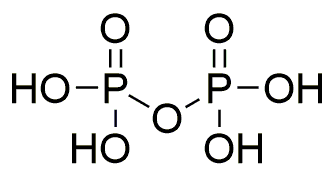Pyrophosphoric acid is widely utilized in research focused on:
- Fertilizer Production: It serves as a key ingredient in the manufacturing of fertilizers, enhancing phosphorus availability for plants, which is crucial for growth and crop yield.
- Food Industry: This acid is used as a food additive, acting as a stabilizer and acidity regulator in various processed foods, ensuring quality and safety.
- Pharmaceuticals: In the pharmaceutical sector, it plays a role in drug formulation, particularly in the development of phosphate-based medications, improving their efficacy and stability.
- Biochemical Research: Researchers utilize it in biochemical assays and studies involving nucleotides and nucleic acids, facilitating advancements in genetic research and biotechnology.
- Water Treatment: It is applied in water treatment processes to remove heavy metals and other contaminants, contributing to cleaner water supplies and environmental protection.
General Information
Properties
Safety and Regulations
Applications
Pyrophosphoric acid is widely utilized in research focused on:
- Fertilizer Production: It serves as a key ingredient in the manufacturing of fertilizers, enhancing phosphorus availability for plants, which is crucial for growth and crop yield.
- Food Industry: This acid is used as a food additive, acting as a stabilizer and acidity regulator in various processed foods, ensuring quality and safety.
- Pharmaceuticals: In the pharmaceutical sector, it plays a role in drug formulation, particularly in the development of phosphate-based medications, improving their efficacy and stability.
- Biochemical Research: Researchers utilize it in biochemical assays and studies involving nucleotides and nucleic acids, facilitating advancements in genetic research and biotechnology.
- Water Treatment: It is applied in water treatment processes to remove heavy metals and other contaminants, contributing to cleaner water supplies and environmental protection.
Documents
Safety Data Sheets (SDS)
The SDS provides comprehensive safety information on handling, storage, and disposal of the product.
Product Specification (PS)
The PS provides a comprehensive breakdown of the product’s properties, including chemical composition, physical state, purity, and storage requirements. It also details acceptable quality ranges and the product's intended applications.
Certificates of Analysis (COA)
Search for Certificates of Analysis (COA) by entering the products Lot Number. Lot and Batch Numbers can be found on a product’s label following the words ‘Lot’ or ‘Batch’.
*Catalog Number
*Lot Number
Certificates Of Origin (COO)
This COO confirms the country where the product was manufactured, and also details the materials and components used in it and whether it is derived from natural, synthetic, or other specific sources. This certificate may be required for customs, trade, and regulatory compliance.
*Catalog Number
*Lot Number
Safety Data Sheets (SDS)
The SDS provides comprehensive safety information on handling, storage, and disposal of the product.
DownloadProduct Specification (PS)
The PS provides a comprehensive breakdown of the product’s properties, including chemical composition, physical state, purity, and storage requirements. It also details acceptable quality ranges and the product's intended applications.
DownloadCertificates of Analysis (COA)
Search for Certificates of Analysis (COA) by entering the products Lot Number. Lot and Batch Numbers can be found on a product’s label following the words ‘Lot’ or ‘Batch’.
*Catalog Number
*Lot Number
Certificates Of Origin (COO)
This COO confirms the country where the product was manufactured, and also details the materials and components used in it and whether it is derived from natural, synthetic, or other specific sources. This certificate may be required for customs, trade, and regulatory compliance.


